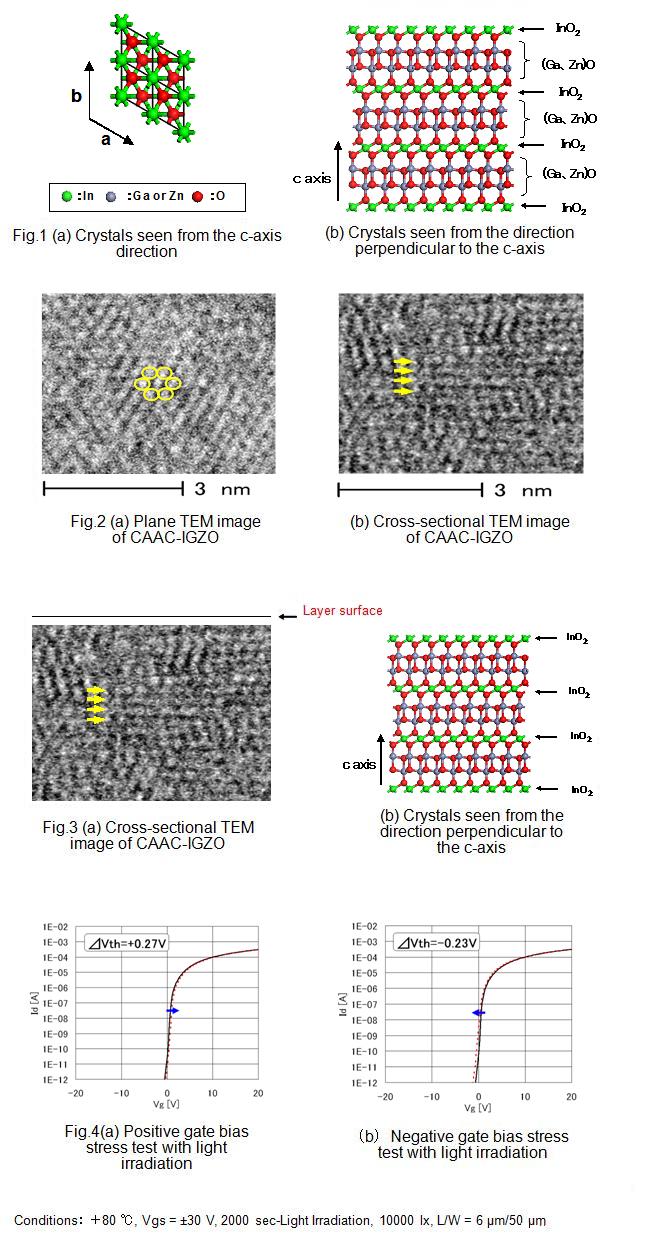(iTers News) - Sharp Corp. and Semiconductor Energy Laboratory Co., Ltd. work together to develop a new oxide semiconductor material, which will pave the pay for manufacturing higher-resolution, power-thriftier, higher performance touch screens with far narrower bezel for LCD panels for use in smartphones and tablet PCs. Consisting of indium, gallium and zinc, the new material features new crystalline structure,which enbales smaller thin film transistors to be etched, providing higher performance, compared with current amorphous IGZO semiconductors. Click on the below PR news section, you can go deeper into the structure of the material.
[sws_toggle1 title="PR News"> Sharp Corporation (head office: Abeno-ku, Osaka; Takashi Okuda, President) and Semiconductor Energy Laboratory Co., Ltd. (head office: Atsugi City; Shunpei Yamazaki, President) have jointly developed a new oxide semiconductor (IGZO) technology with high crystallinity.This material will enable even higher resolutions, lower power consumption, and higher performance touch screens, as well as narrower bezel widths for LCD display panels used in mobile devices such as smartphones. Details of this new development will be presented at the 2012 SID Display Week Symposium to be held in Boston, USA, on June 5 as part of the annual international conference of the Society for Information Display.
This jointly developed new IGZO technology imparts crystallinity in an oxide semiconductor composed of indium (In), gallium (Ga) and zinc (Zn). Compared to current amorphous IGZO semiconductors, it enables even smaller thin-film transistors to be achieved and provides higher performance. This new material is expected to be adopted for use in LCD displays for mobile devices such as smartphones where the trend toward higher screen resolutions is growing increasingly strong.Further, it can also be adapted for use in organic EL displays which hold out high expectations for the future. Although challenges to commercialization remain in terms of both service life and production, the two companies will continue to push ahead with R&D in anticipation of future market needs.
With the aim of early commercialization LCD displays using this new IGZO technology, the two companies will also be pursuing R&D to expand the use of this material in non-display devices and to develop applications other than displays in the future.
Supplementary Information
Sharp Corporation (Sharp) and Semiconductor Energy Laboratory Co., Ltd. (SEL) have found a new crystalline structure in development of oxide semiconductors (IGZO). Sharp and SEL have named this crystalline structure a CAAC (C-Axis Aligned Crystal) structure.
Single crystal IGZO is characterized by having a hexagonal structure when seen from the c-axis direction and a layered form when seen from the direction perpendicular to the c-axis (see Fig. 1 (a), (b)).
What we found in a IGZO layer is a hexagonal structure shown in a plane TEM image and a layered form shown in a cross-sectional TEM image, which indicates that the layer has a crystalline structure (see Fig. 2 (a), (b)).Another cross-sectional TEM image shows the relation between a surface of the layer and the c-axis: the c-axis of the IGZO crystal is aligned in a perpendicular direction to the surface of the layer (see Fig. 3(a), (b))
The name of the structure, the C-Axis Aligned Crystal (CAAC) structure, comes from this relation. A conventional amorphous IGZO TFT has had a problem of shift in electrical characteristics in the gate bias temperature (BT) stress tests, especially in the gate BT stress tests with light irradiation. Meanwhile, a CAAC-IGZO TFT is less influenced by (is resistant to) the gate BT stress tests with light irradiation and has high reliability (see Fig. 4(a), (b)), which means that the TFT can be stable with CAAC-IGZO.
[DESCRIPTION OF DRAWINGS]
[/sws_toggle1]



